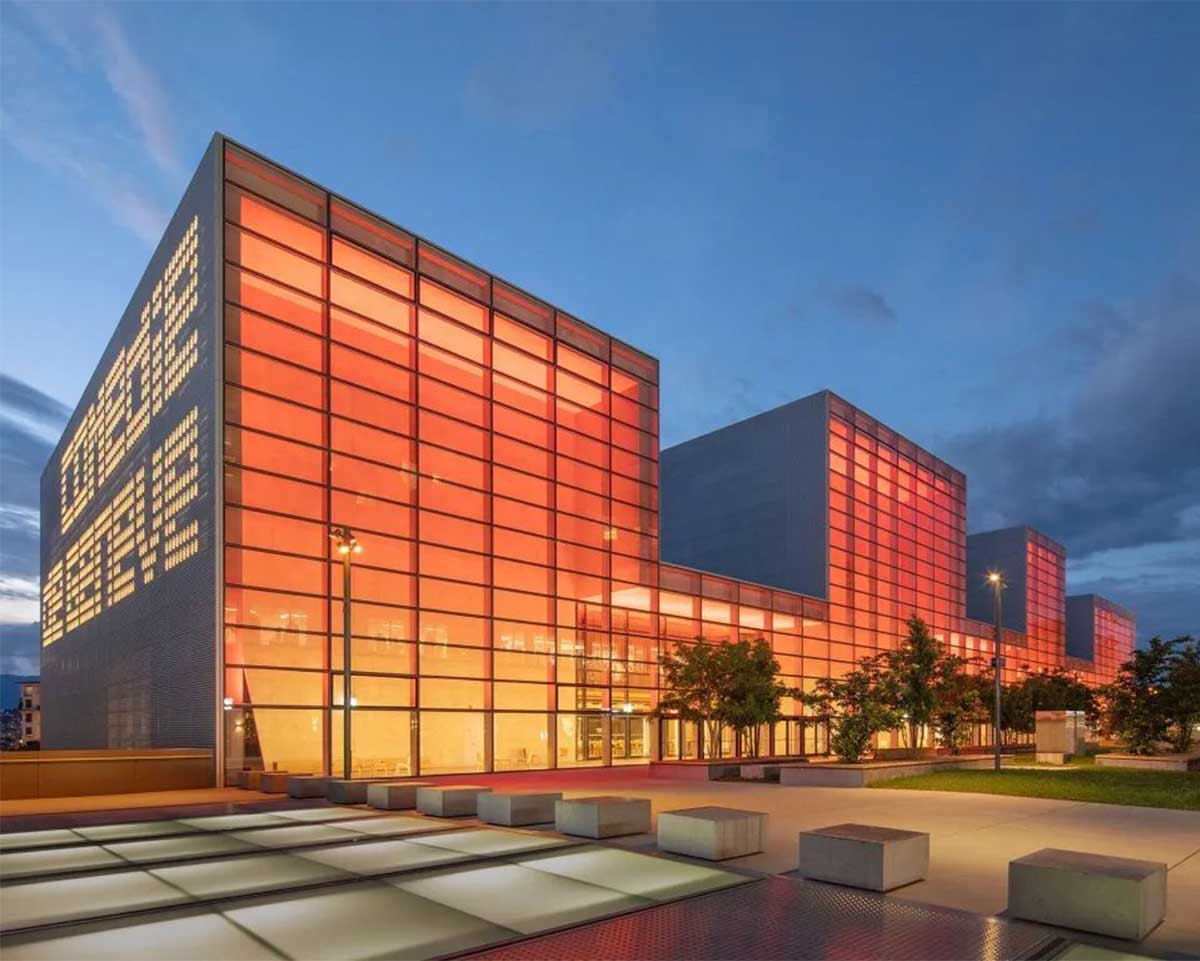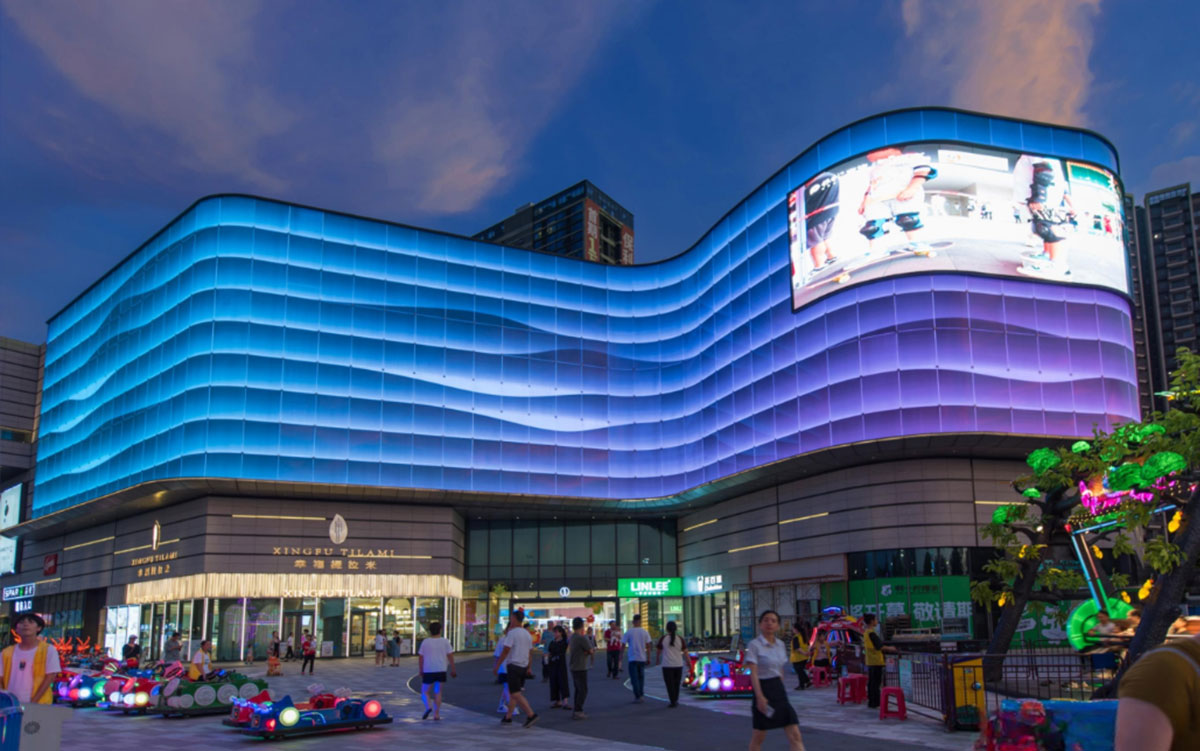A Comprehensive DMX vs. DALI Lighting Control Guide
DMX vs. DALI lighting control features different settings, uses, and strengths. Thus, you must understand their similarities and differences when designing efficient lighting setups. This post uncovers a comprehensive DMX vs. DALI lighting control guide.
1. What is DMX Lighting Control?
DMX Lighting Control is a remote control protocol for stage lighting effects. Digital multiplex facilitates communication between dimmers, controllers, and lighting fixtures, allowing precise control over effects, movement, color, and intensity.
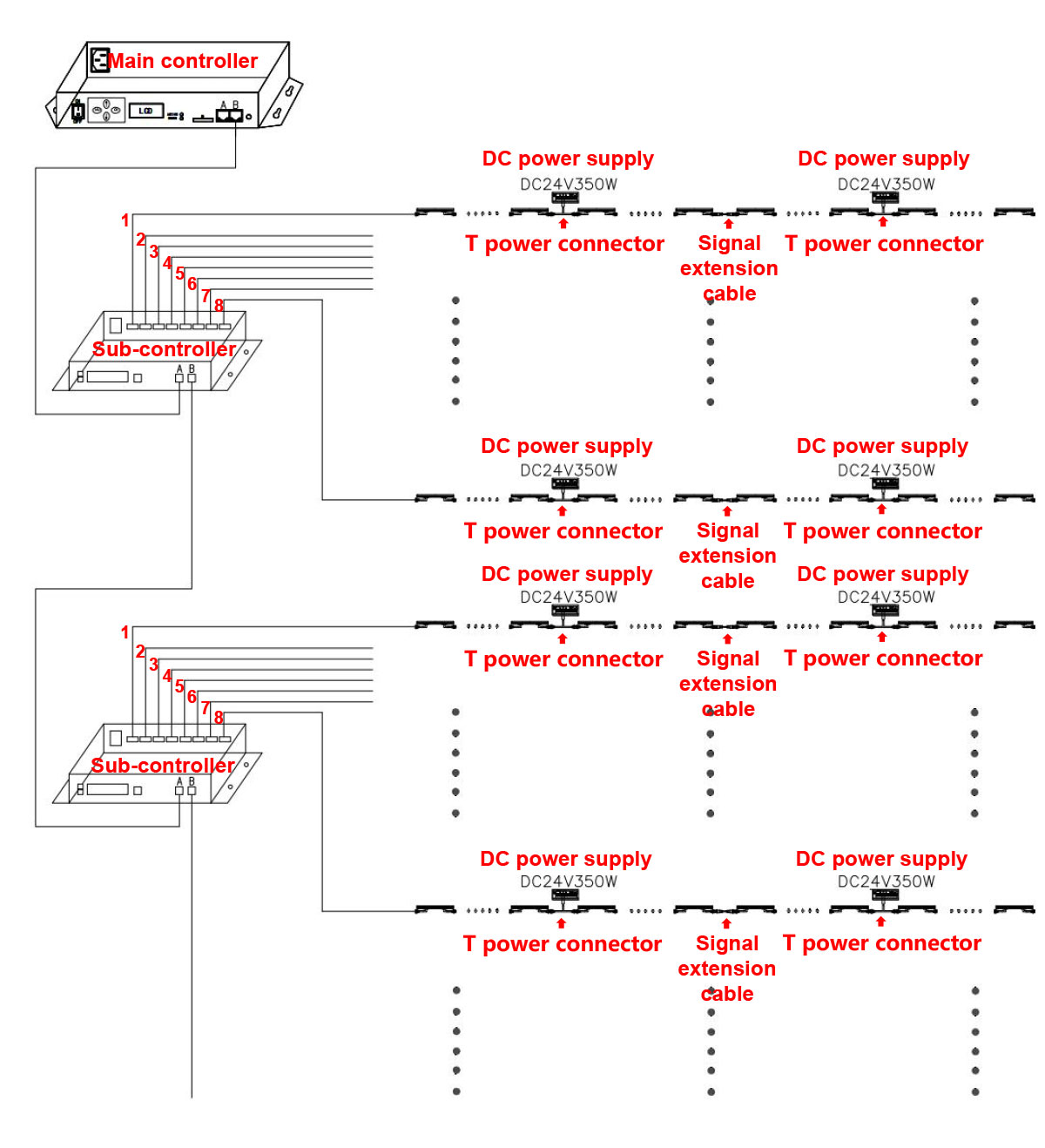
Overall, the system sends digital signals from the controller through cables to the fixtures. These digital signals have unique addresses for enabling synchronized and intricate lighting and displays typical in live events, clubs, concerts, and theaters.
2. What is DALI Lighting Control?
A digital addressable lighting interface is a communication protocol for controlling building lights. DALI allows individual control of the fixture for precise color and brightness adjustments. What components make up DALI lighting control?
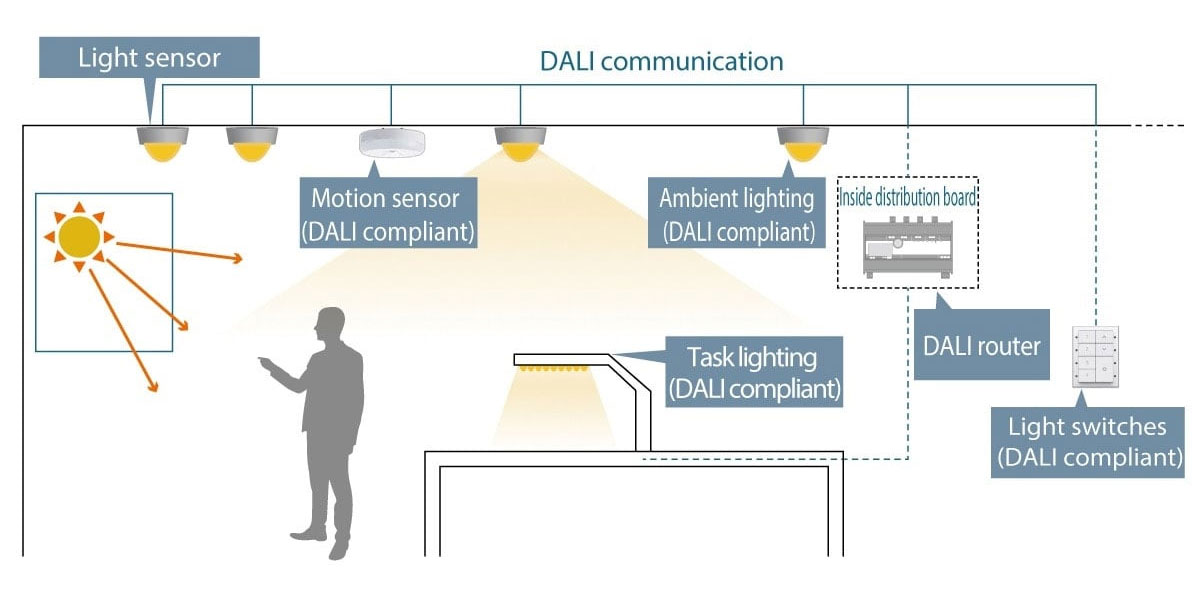
The systems feature switches, compatible sensors, drivers, and ballasts. These components use cables to send digital signals for flexible lighting control. In general, the interface offers easier maintenance, enhanced functionality, and energy efficiency.
3. DMX vs. DALI Lighting Control Differences
DMX vs. DALI lighting control systems differ in capabilities, applications, and features. For instance, DMX is suitable for stages, while DALI is typical for architectural and commercial lighting. This section covers the differences between these lighting controls.
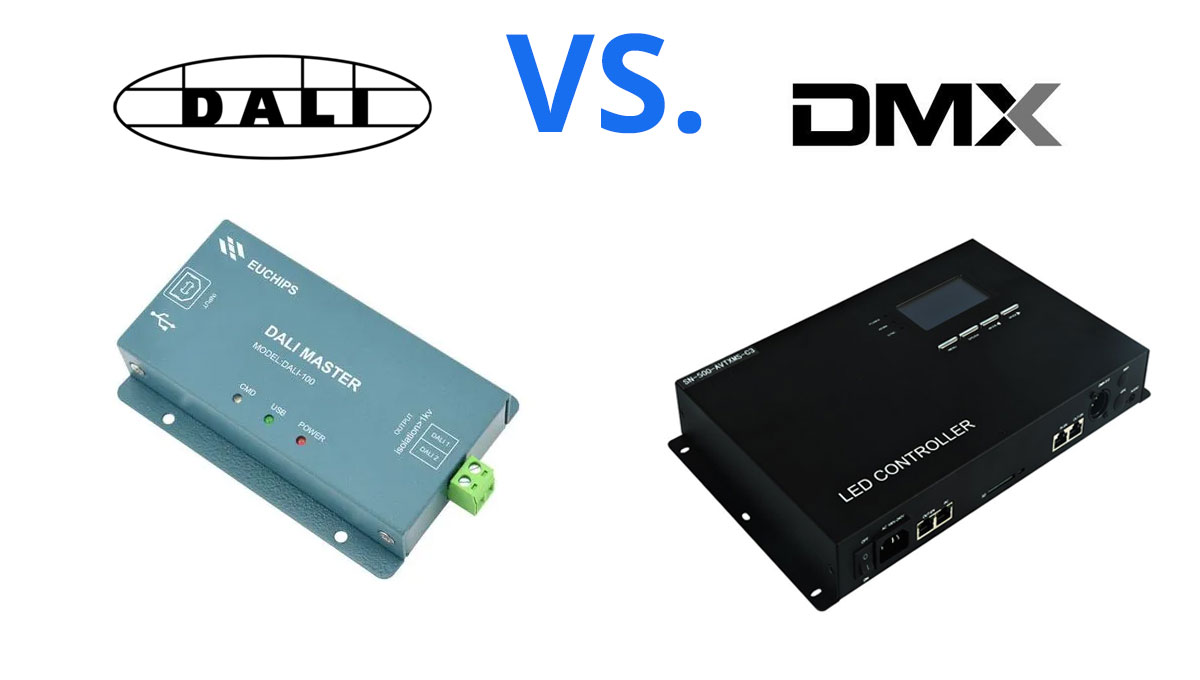
3.1) Dimming Control
First, DMX lighting control provides fine-tuned dimming for groups of fixtures or individual fixtures to suit dynamic lighting effects in stages and entertainment venues. On the other hand, DALI lighting control offers precise dimming to suit commercial and architectural settings where energy efficiency and uniformity are critical.
3.2) Automatic Needs
DMX offers granular lighting control for precise adjustment of individual effects to provide fine-tuned timing, intensity, and color. On the other hand, DALI prioritizes energy efficiency by maintaining optimal conditions through advanced features like daylight harvesting and occupancy sensing.
3.3) Cable Needs
Digital multiplex uses one twisted pair cable, simplifying installation. Meanwhile, the digital addressable lighting interface uses a two-wire cable that is slightly complex to install but can provide flexibility by addressing individual fixtures.
3.4) Color Control
DMX lighting control uses RGB color mixing to support up to 512 channels, allowing precise control for creative and vibrant effects in stage lighting. On the other hand, DALI uses dimming to adjust color temperature in architectural settings. A digital addressable lighting interface provides detailed control over lighting zones.
3.5) Type Control
DMX offers unidirectional communication, simple addressing, and chain configuration. On the other hand, DALI supports star networks, bidirectional communication, and advanced addressing to provide scalability for larger installations.
3.6) Speed
DMX lighting control is suitable for clubs and theaters since it supports rapid data transmission, allowing instant light response in milliseconds. Yet, DALI lighting features a slower pace that suits residential and commercial settings where precise control over individual fixtures is critical to attaining intricate lighting setups.
3.7) Costs Analysis
Digital multiplex lighting control involves higher upfront costs since it requires complex wiring and specialized controllers. On the other hand, a digital addressable lighting interface offers numerous cost advantages for large installations in commercial settings since it features standardized components and simpler wiring.
3.8) Scalability
DMX can run up to 512 channels per universe, suitable for medium-sized or smaller uses. Meanwhile, DALI lighting control has superior scalability, managing up to 64 devices per bus. Each bus can connect multiple systems to suit large installations.
3.9) Energy Efficiency
DMX lighting control focuses on creative light rather than energy efficiency. On the other hand, DALI lighting control enables energy-saving strategies and precise adjustments through daylight harvesting and occupancy sensing.
4. DMX vs. DALI Lighting Control Similarities
DMX vs. DALI lighting control systems are typically used in diverse settings where they perform similar purposes but differ in approach. Thus, understanding the similarities can be critical for optimizing lighting for optimal results. This section covers the similarities in distance coverage control panels and uses.
4.1) Applications
DALI and DMX lighting control support synchronized illumination, centralized control, and precise adjustments for lighting effects. Simply put, they are similar in automation systems, scalability, LED compatibility, and fixture management.
4.2) Control panel
DMX and DALI lighting control systems feature similar interface panels with knobs and buttons for adjusting settings such as lighting effects, color, and brightness. In addition, the feature status indicators to monitor performance.
4.3) Distance coverage
DMX and DALI lighting control share similarities in distance coverage, offering reliable control over lighting to suit diverse uses. In any case, the distance coverage range can be several hundred meters, depending on the settings and installation.
5. Choosing between DMX vs. DALI Lighting Control
DMX vs. DALI lighting control systems have different uses, features, and benefits. Thus, it is critical to understand determining factors like compatibility, installation, and lighting requirements. This section covers how to choose between DMX and DALI.
5.1) Lighting Requirements
DMX offers precise control over lighting fixtures to suit dynamic environments like concerts, stages, and theaters. Yet, DALI lighting control systems provide intricate illumination for residential, commercial, and architectural uses.
5.2) Installation
DMX lighting has a simpler installation process since it uses a single cable to send signals between fixtures and the control. Meanwhile, DALI Lighting has a more complex installation that aims to attain decentralized control and reliable management systems.
5.3) Compatibility
DMX lighting control features seamless integration in entertainment industries, while DALI lighting is popular in commercial and architectural settings. In any case, lighting control systems have gained technological advancement through automation systems and increased manufacturer compatibility.
6. DMX & DALI Lighting Control Applications
Digital Multiplex and Digital Addressable Lighting Interfaces find applications in diverse settings, including architectural, commercial, stage lighting, entertainment, roads, and sports fields. This section covers two applications.
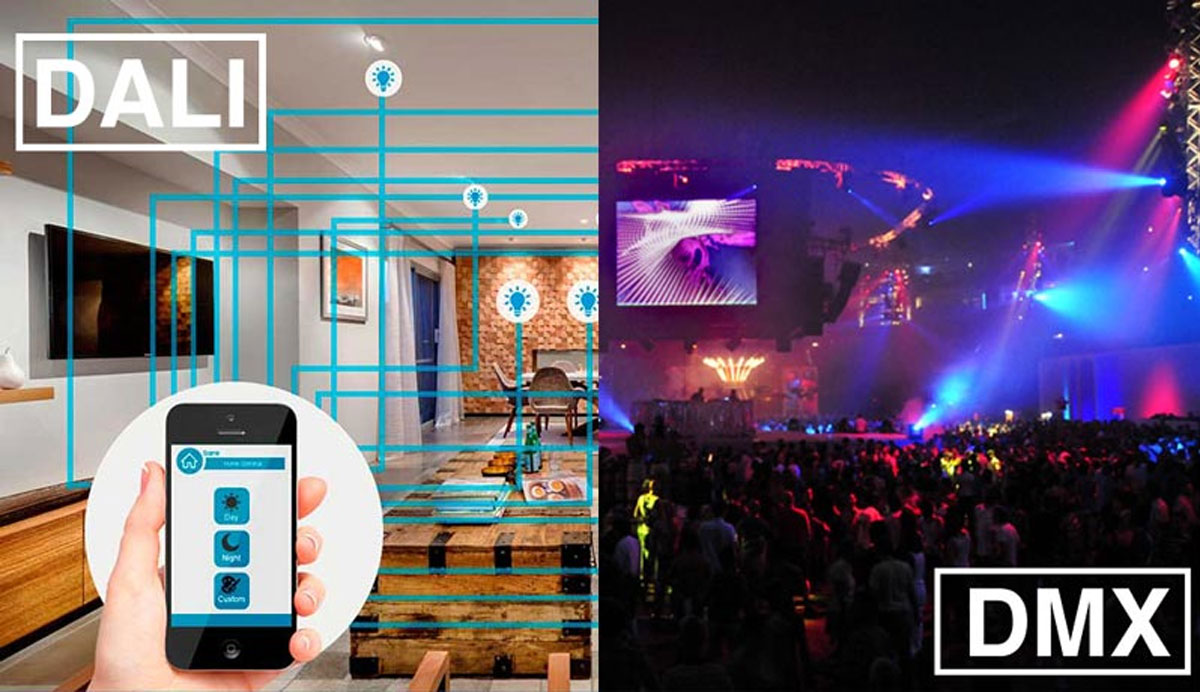
6.1) Commercial Settings
DALL lighting provides precise control over fixtures, allowing tailored solutions that enhance ambiance, energy efficiency, and productivity. They have dimming, scheduling, and centralized management to suit hotels, retail spaces, and offices.
6.2) Sports Field
DMX lighting control can provide customizable lighting effects to allow precise control over movement, intensity, and color in sports fields. Thus, it will enable optimal visibility for events and enhance the viewing experience for spectators.
7. Conclusion
DMX vs. DALI lighting control offers different features, strengths, and capabilities. For instance, DALI lighting provides energy efficiency for commercial settings, while DMX control gives dynamic lighting to stages. The choice depends on your application requirements, compatibility, and installation.
8. Make Your DMX Vs. DALI Lighting Control Choice!
Do you want to choose between DMX and digital addressable lighting interface lighting controls? This guide has provided tips to help you attain your ultimate results with LNJAMI. Our services can help you decide between the two lighting controls, ensuring quality results and compatibility. Get started today!





